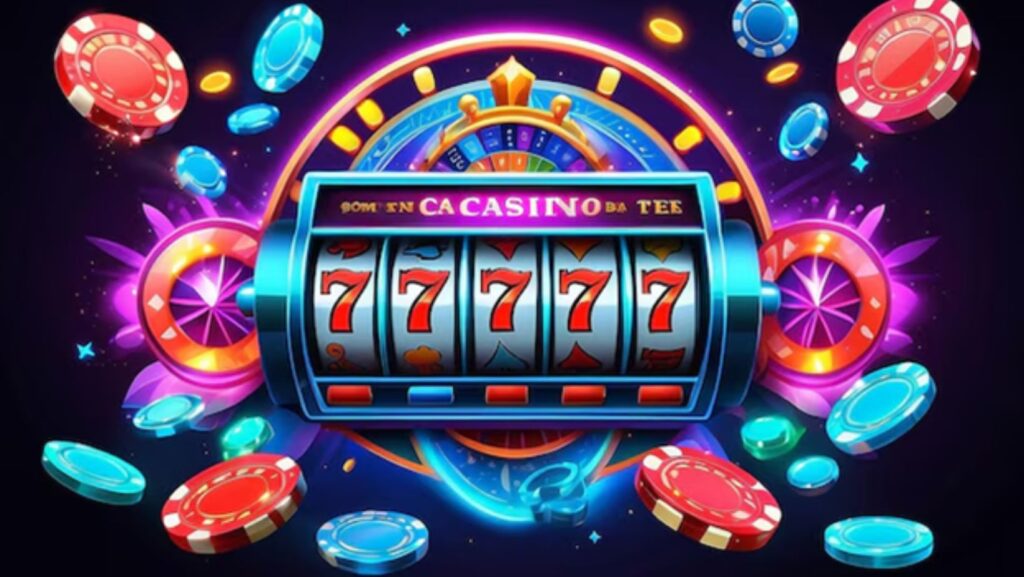The world of online slot games is an ever-evolving landscape, combining the thrill of chance with cutting-edge technology and imaginative design. While players are often captivated by the flashing lights and enticing sounds of their favorite slots, few understand the intricate processes that go into creating these interactive environments. From concept development to the final product, the journey of designing a slot game is a fascinating blend of artistry, technology, and user experience. This article delves into the behind-the-scenes work of designers and how they build engaging slot game environments.
The Conceptualization Phase
Understanding the Target Audience
Before any design work begins, the first step in creating a slot game is understanding the target audience. Designers conduct thorough market research to identify player demographics, preferences, and trends. This information helps them craft a game that resonates with players, ensuring that the visuals, themes, and mechanics align with audience expectations at https://www.3win33.asia/my/en-us/.
For example, a slot game aimed at a younger audience may incorporate popular culture references, vibrant colors, and gamified features, while a game targeting older players might focus on nostalgia, classic themes, and straightforward gameplay. This foundational knowledge shapes the direction of the game’s design and its interactive elements.
Choosing a Theme
Once the target audience is established, the next step is selecting a theme that will serve as the game’s backbone. Themes can vary widely, ranging from mythology and fantasy to pop culture, adventure, or classic fruit machines. A well-chosen theme not only sets the tone but also guides the visual elements, sound design, and gameplay mechanics.
Designers collaborate with writers and artists to brainstorm thematic ideas, ensuring that the chosen concept has the potential to be engaging and immersive. A compelling theme provides players with a narrative context that enhances their overall gaming experience.
Designing the Visual Environment
Creating Eye-Catching Graphics
Visual design plays a pivotal role in engaging players in online slot games. Designers use various software tools to create stunning graphics, animations, and backgrounds that capture the essence of the chosen theme. The goal is to produce visually appealing elements that draw players into the game and keep their attention.

High-quality graphics are essential for creating an immersive environment. Designers often focus on details such as color palettes, character designs, and symbol aesthetics, ensuring that every aspect aligns with the overall theme. For instance, a game based on ancient mythology may feature intricate symbols and vibrant backgrounds that evoke a sense of history and adventure.
Animations and Special Effects
Animations and special effects are crucial for enhancing the interactive experience. Designers incorporate animations that respond to player actions, such as spinning reels, winning combinations, and bonus features. These dynamic elements add excitement and energy to the gameplay, making it more engaging.
Moreover, sound design complements the visual aspects, creating a multi-sensory experience. Designers carefully select background music, sound effects, and voiceovers to enhance the theme and atmosphere of the game. Together, visuals and audio create a cohesive environment that captivates players and encourages them to continue playing.
Developing Gameplay Mechanics
Crafting User-Friendly Interfaces
An intuitive user interface (UI) is vital for ensuring a smooth and enjoyable gaming experience. Designers must create a layout that is easy to navigate, allowing players to access essential features such as paytables, settings, and help sections. Clear icons and organized menus contribute to a seamless user experience, preventing frustration and enhancing enjoyment.
Implementing Game Features
Game features play a significant role in adding depth and excitement to slot games. Designers work to incorporate various elements, such as wild symbols, scatter symbols, free spins, and bonus rounds, which can enhance gameplay and increase winning opportunities. These features often tie back to the theme, further immersing players in the game world.
For instance, a slot game themed around treasure hunting might include a bonus feature where players can unlock hidden treasures for additional rewards. By integrating innovative features, designers keep players engaged and encourage them to explore the game’s potential.
Testing and Optimization
Quality Assurance
Once the design and development phases are complete, rigorous testing is essential to ensure that the game functions correctly. Quality assurance teams conduct extensive playtesting to identify bugs, glitches, or any aspects that may hinder gameplay. This testing phase helps refine the overall experience, ensuring that players can enjoy the game without interruptions.
Optimizing for Different Platforms
In today’s digital landscape, slot games are played on various devices, including desktop computers, smartphones, and tablets.

Designers must optimize the game for different screen sizes and operating systems, ensuring that it delivers a consistent experience across platforms. This optimization process involves adjusting graphics, user interfaces, and gameplay mechanics to suit each device’s capabilities.
Launching the Game
Marketing and Promotion
Once the game is polished and optimized, the final step is to launch it into the market. Marketing strategies play a crucial role in attracting players and generating interest. Designers often collaborate with marketing teams to create promotional materials, such as trailers, social media posts, and advertisements, showcasing the game’s unique features and visuals.
Gathering Player Feedback
After the launch, player feedback becomes invaluable for ongoing improvements. Designers monitor player reviews, engagement metrics, and gameplay patterns to understand how players interact with the game. This feedback informs future updates, ensuring that the game remains relevant and enjoyable for its audience.
Conclusion
The creation of interactive slot game environments is a multifaceted process that combines artistry, technology, and a deep understanding of player preferences. From the initial concept to the final launch, designers play a vital role in crafting engaging experiences that captivate players. By focusing on themes, visuals, gameplay mechanics, and user interfaces, they build immersive environments that keep players coming back for more. As technology continues to evolve, the future of slot game design promises to be even more innovative and interactive, further enhancing the world of online gambling.

